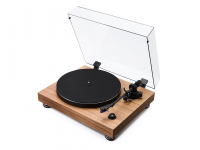The era of premium TV is well underway, with the UHD Alliance introducing the Ultra HD Premium logo over a year ago to create an industry standard for 4K content and technology. But what manufacturers use this label, and for those that don’t, what certification are they using? Let’s take a look…
Shopping for a new TV can sometimes seem a daunting task. There’s a hundred different options with so many fancy bells and whistles, so I completely understand why buying a TV can seem like such a minefield! Trying to get your head around each acronym is enough to make you want to quit and go home; UHD, 4K, HDR, HDCP2.2 BT.2020 and so on. But fear not, we’re here to explain some of the jargon in plain english.
What is Ultra HD Premium?
This means the TV passes a series of tests… it’s a certification of quality. It was created by the UHD Alliance. This industry body is made up from companies such as Dolby, LG, Netflix, Panasonic, Samsung and Warner Bros. In order for the content creators to ensure the quality of its work is seen at its best, and to make it easier for customers to know what they’re buying, Ultra HD Premium was created to help. In order for a television to be awarded this certification, it has to tick a number of boxes:
- A resolution no less than 3840 x 2160 pixels. For those counting, that’s 4 times the resolution of 1080p Full HD.
- The panels should be able to support a 10-bit colour depth. This offers up to 1024 shades each of red, green and blue. 1024 x 1024 x 1024 = 1,072,341,824. Yes, that’s ONE BILLION colours. As opposed to an 8-bit panel, which is just over 16 million unique colours, from 256 shades.
- A specific brightness range. This is between 0.05 and 1000 nits for an LED TV, or 0.0005 and 540 nits for an OLED. A nit is a unit of brightness, meaning the TV is guaranteed to be able to show both excellent details in the shadows and have a brilliant peak brightness. LED TVs have to be brighter, but the black levels do suffer a little. OLED on the other-hand can show perfect blacks, but don’t reach the same brightness as LED TVs.
- BT2020 colour reproduction. They’re not making this very easy now, are they? Now you’ve read the name, you can forget it forever. Essentially it means a TV is capable of decoding and handling the full range of 10-bit colours accurately.
So what manufacturers are using this certification?
Ultra HD Premium has not been fully adopted by every manufacturer. As of time of writing this; LG (for OLED), Hisense, Samsung & Panasonic are using the Ultra HD Premium logo on its products.
Although it’s an active member of the UHD Alliance, Sony has confirmed that it won’t be using the logo. This is despite a number of its models being eligible and ticking all the necessary boxes to qualify. Sony will instead be using its own 4K HDR logo. However, this is where it gets slightly tricky; some Sony models that do not meet the requirements to be an Ultra HD Premium product may carry its 4K HDR logo. So if you’re after a Sony TV that meets the UHD Premium specs, make sure to double-check or give your local store a call!
The Ultra HD Premium certification certainly does tell us how good a TV is. However if the TV doesn’t show the logo, make sure the manufacturer is currently adopting the certification. Ultra HD Premium is ideal if you are comparing 2 TVs from the same manufacturer (one TV with the logo, one without).
HDR and beyond…
LG uses the Dolby Vision logo on its top-end HDR sets. LG describe Dolby Vision as “a premium, proprietary version of HDR. Dolby works directly with filmmakers at major Hollywood studios to create superior HDR video masters of blockbuster movies.” Dolby Vision is essentially a form of HDR treatment. In order to display the best content, Dolby Vision TVs analyse each individual frame and scene. This means the contrast, brightness and colours are optimised no matter what you’re watching. This will give similar results to the criteria for Ultra HD Premium, but the main difference is that on Ultra HD Premium sets with standard HDR processing the TV adapts the brightness and contrast at less frequent intervals. Dolby Vision therefore aims to improve upon the basic criteria for the Ultra HD Premium badge.
Overall, the factors required for a Ultra HD Premium certification are not gimmicks. They are hugely important aspects of any television and if you’re looking for one of the best technological developments to date, products with this badge will help direct you to one of the best options around at the moment.
All in-store colleagues are knowledgeable on what Ultra HD Premium is and can help you make sense of this. If you’d like to have a look at the latest sets showcasing this technology for yourself, please call or pop in-store for a demo today!
Author: Garrett, Plymouth store






why do Samsung omit teletext from some models ?